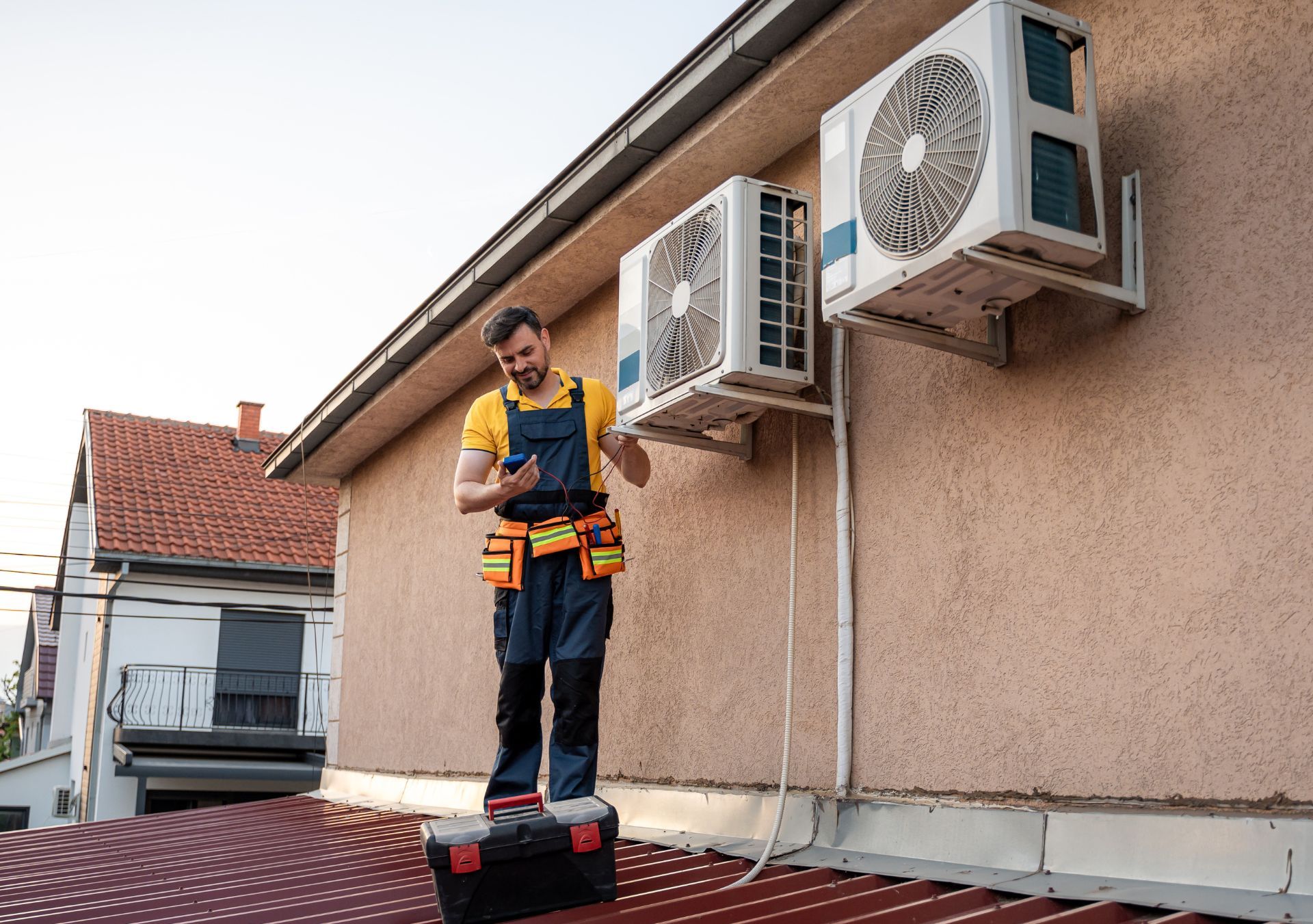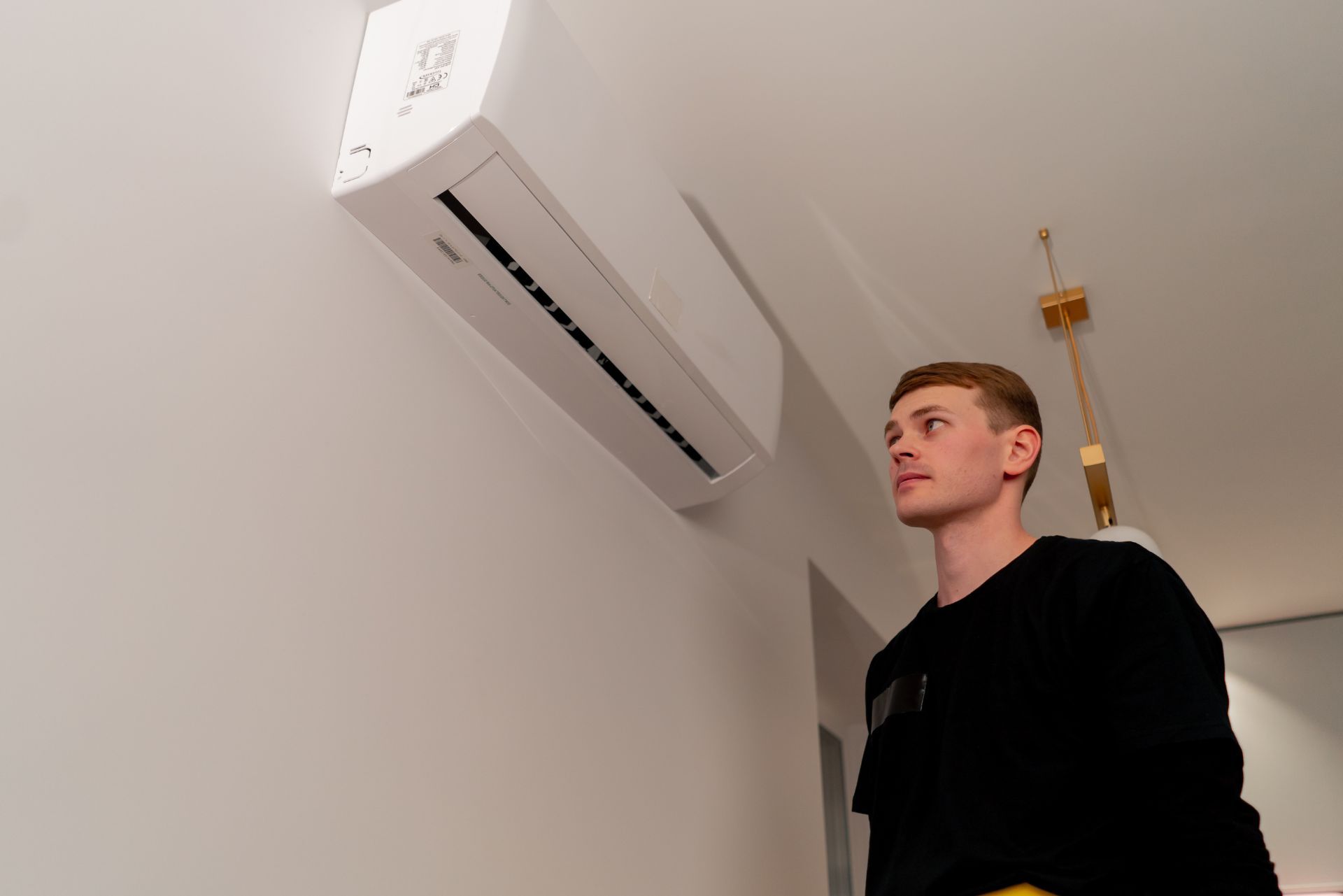Arizona Residential HVAC Contractor Insurance
See How We're Different:
or Call Us:(480) 526-3222

Most Common Business Policies
Index
The Growing HVAC Industry in Arizona
Understanding Insurance Premium Trends in Arizona
Key Insurance Coverages for Residential HVAC Contractors
How Rising Insurance Costs Impact HVAC Contractors
Tips for Securing the Right Insurance for Your HVAC Business
Looking Ahead: The Future of HVAC Contractor Insurance in Arizona
Contact Us
For
residential HVAC contractors in Arizona, understanding insurance requirements and navigating the rising costs of premiums is crucial for business stability and growth. The HVAC industry in Arizona is booming, with thousands of businesses serving a rapidly expanding market. However, this growth comes alongside increasing insurance rates, reflecting broader trends in the state’s insurance landscape. This comprehensive guide explores everything residential HVAC contractors need to know about insurance in Arizona, from premium trends to coverage essentials and industry insights.
The Growing HVAC Industry in Arizona
Arizona’s HVAC sector is experiencing significant expansion, driven by a combination of population growth, rising housing developments, and the state’s extreme climate conditions. The Heating & Air-Conditioning Contractors industry in Arizona is projected to reach $3.4 billion by 2025, supported by over 2,600 establishments and more than 14,000 employees. This growth reflects the increasing demand for heating, ventilation, and air conditioning services across residential and commercial properties alike.
Kristin Gubser, Vice President of Workforce Development at Gateway Community College, highlights the scope of the HVAC industry, emphasizing that it covers everything from home air conditioning units to large commercial and institutional systems in hospitals, schools, and manufacturing plants. This diversity means contractors must be prepared to manage a variety of risks and insurance needs depending on the scale and type of projects they undertake. Furthermore, as energy efficiency becomes a priority for both consumers and businesses, HVAC professionals are increasingly required to stay updated on the latest technologies and sustainable practices. This includes knowledge of energy-efficient systems, smart thermostats, and green building standards, which are becoming essential components of modern HVAC installations.
With the number of HVAC contractor businesses in Arizona rising by 4.5% between 2022 and 2023, the competition and complexity of the market are increasing. Contractors must therefore not only focus on technical skills but also on protecting their business assets through adequate insurance coverage to mitigate risks inherent in the industry. Additionally, the growing emphasis on customer service and satisfaction is pushing HVAC companies to adopt more client-centric approaches. This includes offering maintenance plans, emergency services, and transparent pricing structures, which can significantly enhance customer loyalty and retention. As the industry evolves, the integration of technology such as mobile apps for service requests and real-time monitoring of HVAC systems is also becoming commonplace, allowing contractors to provide more efficient and responsive service to their clients.

Understanding Insurance Premium Trends in Arizona
One of the most pressing challenges for HVAC contractors in Arizona is the steep rise in insurance premiums. Arizona homeowners have faced a 48% increase in homeowners insurance premiums over the past three years, nearly double the national average. This trend is mirrored in the commercial insurance market, impacting contractors who provide essential services to residential clients. Over the past five years, home insurance rates in Arizona have surged by 62.1%, the highest increase of any state during this period.
Diane E. Brown, Executive Director of Arizona PIRG, warns that these "skyrocketing double-digit increases in homeowners’ insurance premiums... have the potential to wreak havoc on household budgets in Arizona." For HVAC contractors, this means that insurance costs are a growing line item in their operating expenses, influencing pricing strategies and profit margins.
Contractors should be aware that liability insurance premiums for HVAC businesses typically range from 1.3% to 2.6% of annual gross revenue. For small operations earning around $150,000 annually, average premiums hover near $3,140. This cost reflects the risks associated with HVAC work, including property damage, bodily injury, and equipment failure. Understanding these figures helps contractors budget more effectively and seek competitive insurance quotes tailored to their business size and risk profile.
Moreover, the increasing frequency of extreme weather events, such as monsoons and heat waves, has contributed to the rising costs of insurance. Insurers are adjusting their risk assessments based on the heightened likelihood of claims resulting from storm damage or system failures during peak temperatures. This evolving landscape necessitates that HVAC contractors not only remain vigilant about their insurance policies but also consider investing in more resilient equipment and training programs for their teams to mitigate potential risks. By adopting proactive measures, contractors can potentially lower their premiums over time and enhance their service offerings to clients.
Additionally, it’s important for contractors to engage with industry associations and local business groups that can provide resources and advocacy on insurance matters. Networking with peers can lead to valuable insights and strategies for navigating the complexities of insurance in a volatile market. Furthermore, staying informed about legislative changes that may impact insurance regulations in Arizona can empower contractors to make more informed decisions regarding their coverage and operational practices.
For more detailed insights on the rising insurance rates in Arizona, visit IIB Arizona’s report on home insurance rates.
Key Insurance Coverages for Residential HVAC Contractors
Residential HVAC contractors must secure several types of insurance to protect their business, employees, and clients. The most common and essential coverages include General Liability Insurance, Workers’ Compensation, Commercial Auto Insurance, and Equipment Coverage.
General Liability Insurance is fundamental, covering claims related to property damage or bodily injury caused by the contractor’s operations. This protects against lawsuits stemming from accidents on job sites or damages to a client’s home during installation or repair work. Additionally, it can cover legal fees and settlements, which can be substantial, especially in cases where injuries lead to significant medical expenses or property damage claims. Contractors should also be aware that some clients may require proof of this insurance before hiring them, making it not just a safety net but also a competitive advantage in the marketplace.
Workers’ Compensation Insurance is mandatory in Arizona for businesses with employees. Given the physical nature of HVAC work, injuries can occur, and this insurance covers medical expenses and lost wages for injured workers, while also shielding the contractor from liability claims. Moreover, having this coverage can foster a safer work environment, as it encourages contractors to implement better safety practices and training programs, ultimately reducing the likelihood of accidents and injuries on the job.
Commercial Auto Insurance is necessary if the business uses vehicles for transporting equipment or traveling to job sites. This coverage protects against accidents involving company vehicles. It also extends to cover liability for injuries or damages caused by employees while driving company vehicles, which is crucial for protecting the contractor’s assets and reputation. Additionally, some policies may offer coverage for rental vehicles, which can be beneficial if a contractor's primary vehicle is in the shop for repairs.
Equipment Coverage insures valuable HVAC tools and machinery against theft, damage, or loss. Since HVAC contractors rely heavily on specialized equipment, this coverage ensures business continuity in case of unexpected incidents. This type of insurance can also include coverage for tools left on job sites, which are often targets for theft. Furthermore, some policies offer replacement cost coverage, meaning that in the event of a loss, the contractor can replace their equipment with new items rather than receiving a depreciated value, which can significantly impact the bottom line.
Each coverage type addresses specific risks, and contractors should work with insurance professionals to tailor policies that match their operational needs and comply with Arizona regulations. Additionally, it is wise for contractors to regularly review their insurance policies to ensure they remain adequate as their business grows or changes. This proactive approach can help mitigate potential gaps in coverage and ensure that they are fully protected against the evolving risks associated with the HVAC industry.
How Rising Insurance Costs Impact HVAC Contractors
The rapid increase in insurance premiums presents a significant challenge for HVAC contractors in Arizona. As insurance costs rise, contractors face pressure to increase service prices, which can affect competitiveness, especially in a market with many small businesses.
For small HVAC operations, where insurance premiums can represent a notable portion of expenses, managing these costs is critical. Contractors may need to explore risk management strategies, such as enhanced safety protocols and employee training, to reduce claim frequency and negotiate better insurance rates. Implementing regular safety audits and investing in advanced training programs can not only help in minimizing risks but also boost employee morale and productivity, creating a more efficient workforce.
Moreover, contractors must stay informed about insurance market trends to anticipate changes and adapt their business plans accordingly. The 4.5% growth in HVAC contractor businesses nationally and in Arizona means more competition, which can squeeze profit margins further if insurance costs continue to climb unchecked. This competitive landscape necessitates that contractors also focus on differentiating their services, perhaps by offering energy-efficient solutions or smart home integrations that appeal to environmentally conscious consumers.
Furthermore, the rising costs of insurance may prompt HVAC contractors to reassess their service offerings. For instance, some may choose to specialize in niche markets, such as green technology installations or high-efficiency systems, which could justify higher prices and attract a different clientele. This strategic pivot not only helps in mitigating the impact of rising insurance costs but also positions contractors as leaders in emerging markets, potentially leading to increased customer loyalty and long-term sustainability.
For a closer look at the HVAC industry’s employment and business growth trends, see the
PBS report on HVAC industry growth.

Tips for Securing the Right Insurance for Your HVAC Business
Choosing the right insurance policy requires careful consideration of your business size, services offered, and risk exposure. Here are some practical tips for residential HVAC contractors in Arizona:
- Assess Your Risks: Identify the specific risks your business faces, including job site hazards, vehicle use, and employee safety.
- Shop Around: Obtain quotes from multiple insurers to compare coverage options and premium costs.
- Bundle Policies: Consider bundling general liability, commercial auto, and property insurance to potentially lower premiums.
- Invest in Safety: Implement safety training and protocols to reduce accidents, which can lead to lower insurance claims and premiums.
- Review Annually: Regularly review and update your insurance coverage to ensure it aligns with your current business operations and growth.
Working with an insurance agent who understands the HVAC industry in Arizona can provide valuable guidance and help tailor coverage to your unique needs. Additionally, it’s essential to stay informed about any changes in local regulations or industry standards that may affect your insurance requirements. Arizona's climate can lead to unique challenges, such as increased wear and tear on HVAC systems during the scorching summer months, which could impact your liability and property coverage.
Furthermore, consider the importance of specialized insurance products such as equipment breakdown coverage. This type of insurance can protect your business from the financial fallout of unexpected equipment failures, which can be particularly costly in the HVAC industry where downtime can lead to lost revenue and dissatisfied customers. By understanding the nuances of your insurance needs and proactively addressing potential vulnerabilities, you can ensure that your HVAC business remains protected and resilient in the face of unforeseen challenges.
Looking Ahead: The Future of HVAC Contractor Insurance in Arizona
As Arizona’s population and housing market continue to grow, the demand for HVAC services will remain strong. However, the insurance landscape is expected to stay challenging, with premium increases reflecting broader state trends in homeowners and commercial insurance.
Contractors who proactively manage their insurance needs and costs will be better positioned to thrive in this environment. Embracing technology, improving operational efficiencies, and maintaining strong safety records will be key strategies to keep insurance affordable and business risks manageable. For instance, adopting advanced HVAC management software can streamline operations, reduce labor costs, and enhance customer service, ultimately leading to fewer claims and lower premiums.
Furthermore, as climate change continues to influence weather patterns, HVAC contractors may need to adapt their services to meet the demands of increasingly extreme temperatures. This shift could lead to a greater emphasis on energy-efficient systems and sustainable practices, which not only appeal to environmentally conscious consumers but also potentially qualify contractors for specific insurance discounts. Insurers are beginning to recognize the value of green technologies, and contractors who invest in these areas may find themselves with more favorable insurance terms.
For ongoing updates on insurance trends and industry insights, contractors can refer to resources like Prescott News’ report on Arizona homeowners insurance, which highlights the broader context of rising insurance costs in the state. Additionally, industry associations and local trade groups often provide valuable information and networking opportunities that can help contractors stay ahead of the curve.
In summary, understanding and navigating residential HVAC contractor insurance in Arizona requires staying informed about industry growth, premium trends, and coverage essentials. With the right approach, contractors can protect their businesses while capitalizing on the opportunities presented by Arizona’s expanding HVAC market. As the industry evolves, those who are adaptable and forward-thinking will not only survive but thrive in the competitive landscape.
